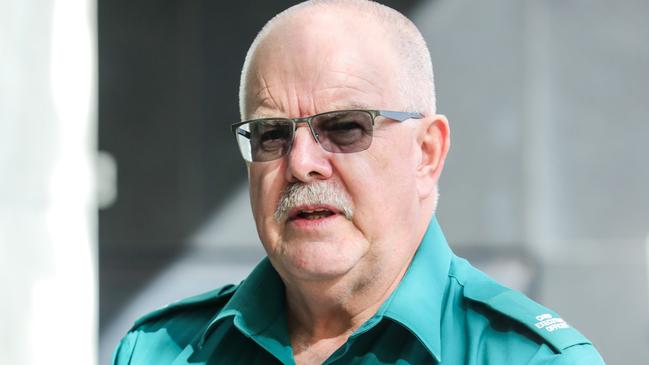Hundreds of triple-0 calls get sent a taxi, not an ambulance, outgoing SAAS boss reveals
Paramedics are now sending taxis to hundreds of people who call triple-0 for an ambulance after deciding their condition isn’t serious enough.
SA News
Don't miss out on the headlines from SA News. Followed categories will be added to My News.
More than 600 people were put in taxis after ringing triple-0 for an ambulance from January to May – and paramedics asked for the system to be expanded after being fed up with being called to cases which were not genuine emergencies.
Parliament’s Budget and Finance committee was told on Monday that on-road paramedics can now call a cab, as can call centre paramedics, for non-urgent patients — but a paramedic always assesses the situation to ensure a taxpayer-funded taxi is a better alternative than tying up a paramedic crew.
The committee heard that on-road crews asked for permission to call for a cab in appropriate circumstances after growing frustration at arriving at non-urgent calls when they may have been needed elsewhere.
Evidence given to the committee also shows increasing demand leading to record ramping is partly due to elderly people with chronic problems — but not acute problems requiring a “lights and sirens” response.

Some are social welfare rather than health emergency cases, and some people even call triple-0 for an ambulance simply because they cannot afford a taxi, the committee was told when questioning SA Ambulance Service (SAAS) officials.
SAAS is now leading the most “aggressive” campaign in the nation to have 20 per cent of emergency calls taken to places other than busy hospital EDs, such as mental health clinics and GPs, to ease ramping pressure. That rate is now at 13 per cent.
SAAS chief executive David Place, who retires on Friday, said the ambulance service was a “catch all” for health problems.
“People don’t always need an emergency ambulance — as long as it is safe, sometimes a taxi is more appropriate,” he said.
He also said ramping is “not as bad as it is painted” by some media outlets, and while there are surges in demand the median time for handover from an ambulance is 30 minutes.
He revealed it has cost SAAS $17,000 so far to remove protest graffiti written on ambulances by disgruntled paramedics.
A deal to end industrial action — but not the graffiti — will see additional 74 paramedics employed at an average cost of around $130,000 per head but Mr Place revealed SAAS had asked the government for 88.
He also blamed the ambulance officers’ union, the Ambulance Employees Association (AEA), for blocking industrial reform to change rosters, which he said was key to easing ramping.
Ramping hit a record 2800 hours lost in May but Mr Place said it was trending downwards.
This was the Royal Adelaide Hospital earlier today. Our hearts extend to those in NSW. Marshall’s health system is in crisis without COVID and without flu. There is no capacity - if we saw a large outbreak in SA lives would be at risk. #saparlihttps://t.co/19A2ZFi1Hqpic.twitter.com/wxyQI5RhgE
— Ambulance Employees Association (SA) (@aeasa1981) August 27, 2021
While shying away from commenting on problems at EDs that cause ramping he noted adding more ambulances may simply result in “more ambulances on the ramp”.
The coroner is looking into two cases of deaths with possible links to ramping but Mr Place stressed that despite some reports of people dying in the back of ambulances, “most died in the resuscitation room”.
The committee was told 98 per cent of on-road SAAS staff have had at least one Covid jab and the remaining staff were being put on “alternative duties.”



